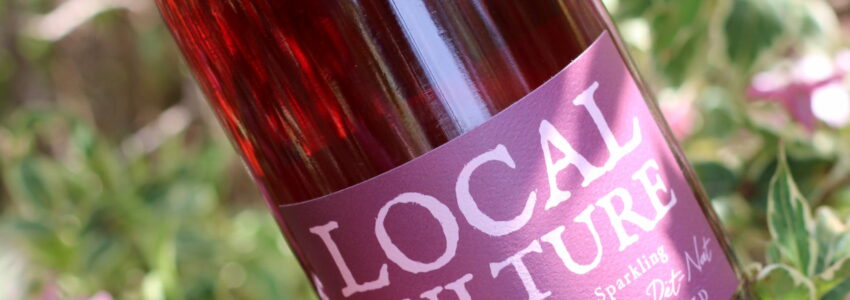Local Culture – 2023 Pinot Noir Pét-Nat

There probably wouldn’t be a Local Culture if it weren’t for Pét-Nat. In case you aren’t aware of how we got here, I’ll explain: around 2016 I started making a concerted effort to try intervening less in the cellar. I was looking for something I wasn’t tasting in our wines, and I wondered if slowing down and zooming out might help me find it. That year we made our first String of Pearls Riesling. It was an exciting step in a new creative direction, and I was hooked.
The Méthode Ancestrale tradition, leveraging primary fermentation to achieve in-bottle carbonation, was exactly the sort of fast-and-loose winemaking protocol I needed to break the habit of over-intervention. These wines require a winemaker to give up control early in the process — sometimes bottling an active fermentation as quickly as a month post-harvest — limiting opportunities to make adjustments. Taking the ability to tinker off the table was terrifying, but I understood that I wasn’t going to get where I wanted to be by putting down roots in my comfort zone. I knew we were on the right track as soon as I tasted that first vintage of String of Pearls, and the confidence that inspired had me looking to do more.
In the years that followed, we produced a variety of wines to the Méthode Ancestrale beat, using conventional winemaking techniques and additives. With those experiments having proven successful, I felt empowered to explore uninoculated and pied de cuve fermentations — the exact sorts of wines that Local Culture highlights. For purely practical reasons, we never combined these ideas to make the more “Nat”-style Pét-Nats I’d been exploring outside of work.
After a few conversations with other local winemakers, I had some new tricks up my sleeve and it was time to try making Pét-Nat without commercial yeasts. In the Fall of 2023, we were just about to release the first Local Culture wines and gameplanning what wines might come next in that series; a wild culture Pét-Nat felt like a perfect addition to the lineup. We’d bled some saignée from a wild Pinot Noir fermentation, and it was just the right volume to take a chance like this. We monitored it with this in mind, and bottled just before reaching dryness.
Opening the first bottle after carbonation filled me with the same excitement and anxiety as that first bottle of String of Pearls. Making wines in this less-controlled fashion requires a ton of trust, and plenty can go wrong along the way. You never really know if the chance-taking paid off until you taste the finished product, so there’s an element of bated breath to that first sniff and sip. The first taste of this Pinot Noir Pét-Nat didn’t disappoint, and it has me wondering what new twists and turns this low intervention adventure is going to present next. All I know for sure is that I’m going to keep pursuing it. In the meantime, I’ll be enjoying the fruit of another successful experiment; one that I look forward to sharing with all of you.
